
O ar, quanto mais frio, mais denso ele fica, portanto, melhora a queima da mesma quantidade de combustível injetada, reduzindo o consumo, em comparação à mesma situação, mas com ar mais quente.
Então, o setor de engenharia de alta performance da BMW, a divisão M, produziu um sistema que injeta um fino spray de água no coletor, para reduzir a temperatura do ar antes de misturá-lo com a gasolina. Isto reduz a tendência de pré-detonação, o popular "batida de pino", permitindo que se adiante o ponto de ignição para ficar próximo do ideal.
De acordo com a BMW, o sistema de injeção com adição de água torna o processo de combustão mais eficiente, e não somente melhora o desempenho como reduz o consumo de combustível, aumentando também a vida útil dos componentes do motor.
A água necessária para o sistema de injeção é armazenada em um depósito, à prova de congelamento, localizado no porta-malas, e possui cinco litros de capacidade. Junto a ele fica a bomba, sensores e válvulas, e todo o sistema é controlado pela central eletrônica do motor.
A bomba empurra a água até os injetores a uma pressão de 10 bar, e a quantidade de H20 gasta na operação de queima da mistura ar-combustível-água depende da temperatura ambiente, rotação do motor e o peso total do carro mais motorista, passageiros e carga, para otimizar o consumo de água.
A BMW M diz que o nível do tanque de água precisa ser conferido, e se necessário, completado, antes de qualquer condução em pista. Já ao rodar em vias públicas, é estimado que se verifique o nível do depósito de água no porta-malas a cada cinco paradas para reabastecimento do combustível.
Além disso, a empresa alega que o sistema de injeção com adição de água, por enquanto, está presente apenas no safety car da MotoGP, mas acredita que logo estará disponível em um modelo de produção.
Innovative water injection system.
More power and reduced formation of hazardous substances.
Frank van Meel, President of BMW M Division: „BMW M has always been synonymous with technological innovations, and we are delighted to be able to present another new highlight this year: in the near future, BMW M Division will begin production of a model featuring water injection. Water injection is a system designed to increase the performance and reduce the consumption of combustion engines. We will be using this technology in the BMW M4 MotoGP Safety Car for the 2015 season for the first time.“
"The BMW M4 MotoGP Safety Car allows BMW M Division to underline ist innovative prowess and to follow the brand’s philosophy of bringing motorsport technology to the streets. At the same time, the model also offers a clear perspective of an M car that will set a new benchmark in terms of performance, exclusivity and individuality. As well as greater performance coupled with outstanding consumption and emission figures, customers will also benefit from an innovative water injection system with benefits both on the racetrack and in everyday use."
The mechanism behind water injection in detail.
The performance achievable by a combustion engine is limited by various factors, including the process temperature in the combustion chamber. If this temperature is exceeded, the result is uncontrolled combustion (knocking) and thus a loss in performance and, in the worst case, expensive damage to the engine.
This is particularly important when the engine is charged, as the intake air is already heated intensely in the turbocharger’s supercharger.
An intercooler does ensure that the temperature drops as necessary, but even that has ist physical limits. Depending on design and dimensions of the cooling system and the car’s aerodynamics, the intake air reaches temperatures that are just below the maximum permitted temperatures.
Increasing the supercharging pressure would exceed the knocking limit and is therefore not a viable means for increasing performance. BMW M Division has a solution: injecting a fine spray of water into the collector once more significantly reduces the temperature of the combustion air.
The cooler supercharged air reduces the engine’s tendency to knock, making it possible to bring the point of ignition forward and thus closer to the optimum value. This makes the combustion process more effective, whilst at the same time reducing the combustion temperature. On the other hand, cool air has a higher density which increases the oxygen content in the combustion chamber. This results in a higher mean pressure during the combustion process and in turn optimises performance and torque. Finally, the effective internal cooling of the combustion chamber reduces the thermal strain on numerous performance-related components. This not only prevents damage to pistons, exhaust valves and catalytic converters, but also reduces the strain on the turbocharger, which is subjected to lower exhaust temperatures.
The lower process temperatures also reduce the formation of hazardous substances, in particular nitrogen oxide (NOX). Water injection consequently dramatically improves the effectiveness of the engine.
Using water injection to increase the knocking limit also helps to largely resolve a familiar conflict in objectives when designing powerful engines. Performance and consumption are not least determined by the compression ratio. This also applies, in particular, to highly charged turbo engines like the BMW M TwinPower Turbo, inline six-cylinder. Thanks to a high compression ratio, this engine is highly efficient and boasts low consumption figures, especially in the partial load range. However, the maximum compression ratio is limited by the knocking tendency when fully loaded. Water injection is also hugely beneficial here, as it reduces the tendency for the engine to knock, whilst at the same time increasing the compression ratio. This way, the turbo engine can achieve optimal performance across a wide range of operating points
Implementing the tevchnology in the BMW M4 MotoGP Safety Car.
When positioning the water injection, the engineers at BMW M Division opted for a layout with three injection valves in the plenum chamber, each supplying two cylinders of the six-cylinder, inline engine. This solution ensures very equal distribution and also allows the system to be designed in a compact manner.
Located in the boot of the BMW M4 MotoGP Safety Car is a water tank with a gross volume of about five litres, which houses the water pump, sensors and valves. The pump and complete system of sensors and actuating elements are controlled by the engine electronics, which have been upgraded accordingly. In practice, the pump feeds the water to the injectors at a pressure of ten bar, whereby the appropriate volume is supplied depending on load, engine speed and temperature. This ensures that water consumption is kept to an absolute minimum. In rigorous action out on the racetrack, it is always necessary to refill the water supply whenever the car must refuel. During standard operation, the intervals between water refills are considerably longer, depending on the driving style. Even when driving faster on the motorway, it is only necessary to refill the water container roughly every five stops for refuelling. To ensure the system is as suitable as possible for daily use, it does not require any additional maintenance.
For safety reasons, the BMW M water,injection works with a sophisticated automatic diagnosis. Should the water tank be empty or parts of the system fail, appropriate measures will be taken to protect the power unit. Supercharging pressure and ignition point are cancelled, thus enabling continued operation of the engine without any restrictions other than reduced performance. However, a wide range of measures also ensures the functionality of the system during normal operation. After the engine has been turned off, the water is transported back from the pipeline into the tank, in order to prevent the system components freezing in minus temperatures. The water tank itself is also frost-proof.




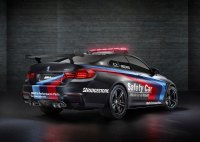
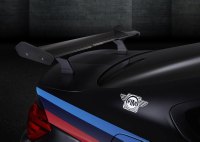
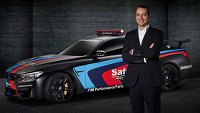



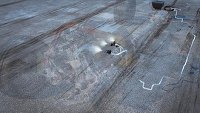



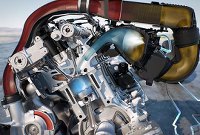
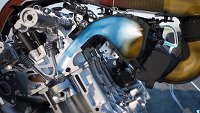
Postar um comentário